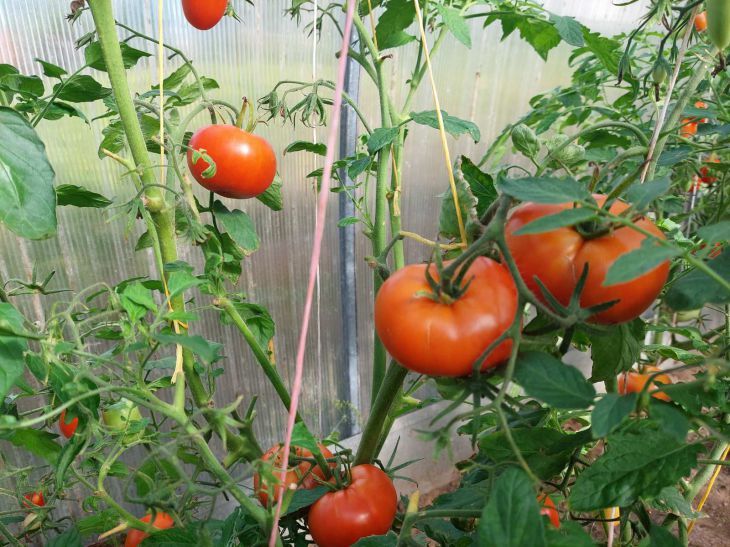The correct time for watering tomatoes in a greenhouse plays a key role in their development and yield.
Incorrect watering can lead to diseases, reduced yields and even death of plants.
When is the best time to water tomatoes in a greenhouse to achieve maximum results?

Watering in the morning
Watering in the morning is considered the optimal time for most plants, and tomatoes are no exception.
Morning watering allows moisture to be absorbed into the soil and plant roots before the heat of the day sets in.
This improves the water supply to plants and prevents rapid evaporation of moisture.
Morning watering also helps reduce the risk of fungal diseases that often occur when there is excess moisture at night.
Water that gets on the leaves in the morning has time to dry before evening, which reduces the likelihood of mold and other diseases developing.
Watering in the evening
Watering in the evening also has its advantages. Evening watering allows plants to absorb moisture throughout the night, which is especially useful on hot summer days.
However, it is worth considering that watering in the evening can lead to increased humidity in the greenhouse, which creates favorable conditions for the development of fungal diseases.
To avoid this, it is necessary to ensure good ventilation of the greenhouse and try not to water the leaves of the plants, but to direct the water directly to the roots.
The influence of temperature and humidity
Temperature and humidity in the greenhouse play an important role in choosing the timing of watering.
In conditions of high daytime temperatures, morning watering helps plants survive the heat by providing the necessary amount of moisture.
Air humidity also affects the choice of watering time. When humidity is high, it is better to water in the morning to reduce the risk of diseases.
In low humidity conditions, evening watering may be considered, but with caution and ensuring good ventilation.
How to water tomatoes
Proper watering of tomatoes includes not only the choice of time, but also the watering technique. It is important to avoid getting water on the leaves and stems to prevent the development of fungal diseases.
Watering should be done at the root, evenly distributing the water over the entire area of the root system.
Using drip irrigation is the optimal solution, as it allows for uniform soil moistening and minimizes water loss.
Drip irrigation also reduces the risk of waterlogging and maintains soil structure.
Taking into account the individual characteristics of plants
Each plant has its own individual characteristics that must be taken into account when watering.
Some tomato varieties are more drought-resistant, while others require constant moisture. Monitoring the condition of the plants will help determine the optimal time and frequency of watering.
If the leaves begin to wilt, it means that the plants are lacking moisture and need watering.
However, overwatering should be avoided, as this can lead to waterlogging of the soil and death of the roots.
Watering depending on the growth phase
At different stages of growth, tomatoes require different amounts of moisture. During the period of active growth and fruit formation, plants need more water.
Watering at this time should be regular and abundant. During the ripening period of fruits, watering can be reduced to avoid cracking of fruits and improve their taste.
It is important to monitor the condition of the soil and not allow it to dry out or become over-watered.
Practical advice
For best results, it is recommended to combine morning and evening watering, taking into account weather conditions and the condition of the plants.
On hot days, it is better to water in the morning, and on cool days, in the evening. Regular monitoring of the condition of plants and soil will help determine the optimal watering schedule.
Using organic mulches such as straw or compost will help retain moisture in the soil and reduce the frequency of watering.
Earlier we told you about the kind of fertilizer applied in June that increases garlic yields several times over.
